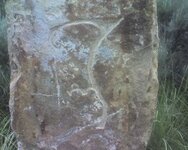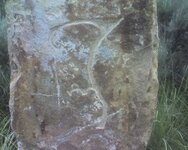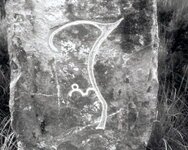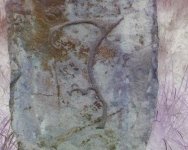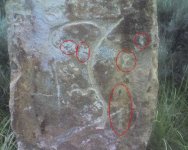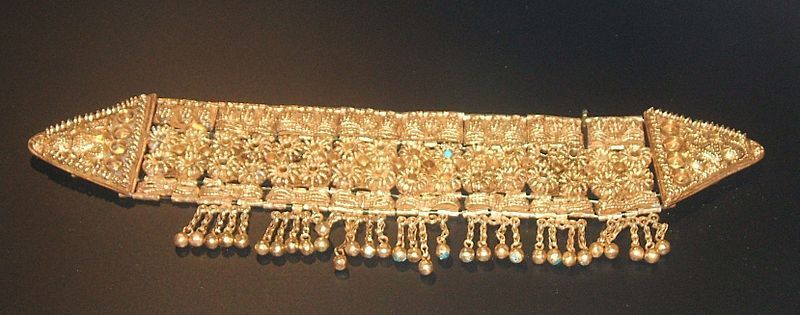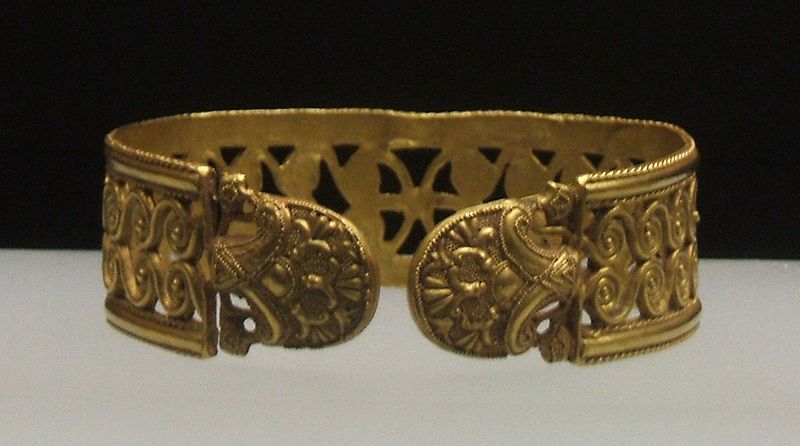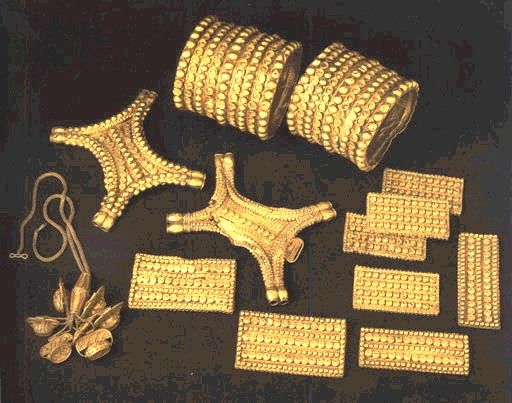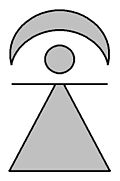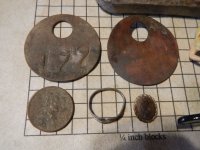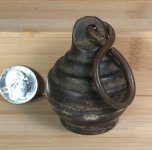I'm new to this site and I posted this in the General Discussion area but it seems nobody commented.
I feel this is a treasure map. It's pretty old I figure and in a well known treasure area because of the white patina it's not a fake but I don't know how to read it or what it means. I've seen a lot of Spanish signs and found carved flowers on trees and hearts before and from reading other posts in this forum I figure it must be related to the number 7 but then there's the little map going to the left and this has some kind of special meaning I'm sure.
It' was very hard to spot due to the overgrowth of bushes near a stream.
Lots of effort must have been required to move this hunk of rock and plant it in the ground cause it's about 6' high and 2 ft. square. It's not natural.
I feel the little map jutting out from the fancy 7 is the key. Reading from right to left I think it could be a shaft or tunnel first then a hill and a circle that is probably the treasure? but then it just ends. The carving is about 20" high.
Can anyone telll me what these signs mean?
I feel this is a treasure map. It's pretty old I figure and in a well known treasure area because of the white patina it's not a fake but I don't know how to read it or what it means. I've seen a lot of Spanish signs and found carved flowers on trees and hearts before and from reading other posts in this forum I figure it must be related to the number 7 but then there's the little map going to the left and this has some kind of special meaning I'm sure.
It' was very hard to spot due to the overgrowth of bushes near a stream.
Lots of effort must have been required to move this hunk of rock and plant it in the ground cause it's about 6' high and 2 ft. square. It's not natural.
I feel the little map jutting out from the fancy 7 is the key. Reading from right to left I think it could be a shaft or tunnel first then a hill and a circle that is probably the treasure? but then it just ends. The carving is about 20" high.
Can anyone telll me what these signs mean?


